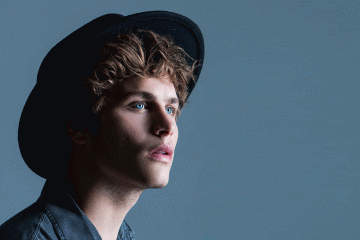The Novice's Guide to Product Photography
If a picture is worth a thousand words, a magnificent product picture deserves a thousand website visits. Although I do not have data to back up that declaration (yet), product photography can be very useful to your ecommerce internet site strategy.
To reach your target market members that like acquiring online, you likewise require to give your target market clear, distinctive photos of your products.
However product photography isn't as basic as pointing and shooting. Even one of the most fundamental items require the correct equipment, lighting, and room to produce gorgeous pictures that offer shoppers right from the purchase page.
6 Product Photography Tips ( and also Examples) for Taking Photo That Market

1. Don't be afraid to use your smartphone's electronic camera.
This is the component where I'm intended to encourage you to purchase a premium, 50-megapixel (MP) video camera with a 100-millimeter screw-on lens. However I'm not mosting likely to do that.
If you already have a electronic camera that fits this description, make the most of it. But for many sorts of products, it's totally acceptable to fire product pictures on a smartphone.
Newer mobile phones flaunt powerful cam lenses and setups that enable you to optimize your shots for the various sorts of light and environments you might fire in.
If you need more persuading, just look into Apple's Shot On An iPhone project as well as the images that have resulted from it for many years such as this:
2. Shoot from a tripod for photo consistency.
Prior to explaining tripods, I'm bound to start with a principal regulation: Do not prop your phone versus something tough to intend your lens towards the topic.
It's simply too easy for this makeshift configuration to slide around during the shoot and also cause incongruities in your images' appearance. If you rest your video camera on, claim, a pile of books, just make sure this arrangement does not change throughout the shoot.
There's no damage in holding your video camera yourself when firing simply a couple of product images for your ecommerce internet site. However as your business expands, and you take more photos of even more items, it can be hard to standardize the product's positioning in each photo when shooting handheld.
To guarantee uniformity throughout your items, you'll need a tripod. And also fortunately, getting one isn't always the huge, industrial-sized investment it made use of to be.
Below are two sorts of tripods to take into consideration.
Typical vs. Adaptable
This is a custom tripod-- there are typical tripods available for both electronic cameras and smartphones.
A versatile tripod can be adjusted in a variety of means. You can bend its legs and also put it on different surfaces to obtain the angle you require.
Mobile Grasp
There's usually a screw on the top of your tripod which attaches to your cam to hold it in position. The underside of many professional-grade cameras has a screw hole just for this objective, yet mobile phones can utilize the complying with adapter:
The adapter grips the sides of your mobile phone as well as can screw into either type of tripod, allowing you to run the camera manages with the phone screen facing exterior and also towards you.
Once you determine which place you'll need, set it up before your product, and think about placing 3 pieces of tape on the ground to mark where you wish to keep each leg of your tripod over the course of the shoot.
3. Choose all-natural light or artificial light.
Never take too lightly just how specific kinds of light can boost (or prevent) your product photography. Remember, buyers obtain the very best check out an item personally, where they can see everything they need to prior to buying. The ideal lighting plan assists you disclose those vital decision-making product features when all internet site visitors need to go on is a photo.
A single lights arrangement may not benefit every product-- a illumination arrangement that helps some items could deteriorate the look of others.
There are two types of light you can pick as your major light source: natural and also synthetic light.

All-natural Light
All-natural light describes sunshine-- straightforward as that. It's also known as "soft light" since the sun casts a bigger, softer range of light than, say, a lamp beaming directly on the product. Ecommerce product shots thrive in all-natural light if:
The product is shot outside or suggested to be made use of outside.
The product is utilized by, endured, or shot with a person (people often tend to look far better in all-natural campaign photographer light).You're trying to highlight the product's surroundings, as opposed to details features of the product.
Right here's an instance of a shot making use of natural light:
Artificial Light
Synthetic light includes candles, fire, and a lot more frequently, light bulbs. It's additionally described as "hard light" since it creates a smaller sized but much more concentrated light surface. This sort of light caters to products with physical information that require to be highlighted to impress an on the internet customer.
As a basic policy, stick to just one type of light per photo-- all-natural or fabricated. Including natural light to an synthetically lit photo can soften a product that's suggested to festinate, and also including fabricated light to a normally lit photo can develop a product that's meant to look soft. You don't want to enter your very own way.
4. Fill or jump your light to soften shadows.
Whether you make use of natural light or artificial light, you'll need to reduce the darkness that any potential tough light casts on the opposite end of a product.
There are three methods to do this:
Fill up Light
Consist of another, less-intense light to supplement your primary light. This additional light is called your fill light as well as is made use of as a counterbalance to soften the natural shadow your primary light produces behind an item.
To do this, place your fill light opposite your main light so your product rests between both lights.
Flashbulb Bounce Card
A bounce card, or reflector card, is a small card that " shows" or "bounces" the major light back onto the surface beneath your product to lower shadows.
Some bounce cards connect to the flashbulb of a professional cam lens to diffuse the light from the electronic camera's flash. This card splashes a softer light onto the topic from above your collection-- instead of straight at it-- so you don't have long darkness trail behind the item you're shooting.
Standalone Bounce Card
If you're shooting from a mobile phone, a flashbulb bounce card isn't an choice, because you don't have a physical flash you can connect it to. Instead, make your very own standalone bounce card positioned contrary your major light.
For beginners to product photography, this bounce card can effectively change your fill light, which counters the difficult light from the electronic camera flash or light that's encountering towards the front of your product.
5. Utilize a sweep or portrait mode to emphasize the product.
There isn't one best means to place your product, lights, and bounce cards-- they can alter considerably depending on your history. But do not choose a background based upon what's simplest to produce. Backgrounds should resemble exactly how you desire your customers to view your product when viewing it online.
Think about initially whether you 'd like a white history or a more dynamic, real-world background. There's an easy way to attain each one.
White History: Move
For white histories, it's not as easy as setting up a table against white drywall. Also smartphone video cameras can get little blemishes on a white wall that you would not observe with the nude eye. To catch a best white history with no corners or imperfections, utilize a move.
A sweep is a huge flexible sheet of paper, whose bottom acts as the surface below your product and then curves up right into a white wall surface behind the product.
On cam, the move's contour is invisible, highlighting vital product information and also allowing the item to possess all of a internet site site visitor's interest.

Real-World History: Portrait Setting
Dynamic, real-world histories are extremely attractive when shooting products that have a certain usage or are being designed by a person-- as you saw in the picture of the brief-case previously in this overview.
But, it's very easy for a real-world background to steal the emphasis of the photo, making it vague which item in the photo you're in fact selling.
Give your product deepness as well as emphasis with picture mode, a picture setup on the majority of professional cams, and also readily available on many new smart devices. This setting obscures the history so the context of the product is clear yet not contending versus the product itself.
Below is a extremely remarkable photo of a HubSpot pen taken in picture mode on a Google Pixel 2 (I took this picture myself). You can tell the pen sits on a workdesk with a computer system behind it, but the pen is still the centerpiece for visitors:
6. Fire a variety of pictures.
My last ecommerce photography suggestion to you is to not stop at one photo per product. Equally as your clients look, hold, make use of, and also also try out product in a store, your website ought to shoot a variety of pictures to simulate this extremely experience.
If you're shooting clothes, as an example, catch the garment of garments alone-- that is, expanded on a white surface area-- as well as on a mannequin whose color contrasts the shade of the product.
Then, for extra photos, have the clothes modeled on a person, allowing you to take images of the product from the individual's different positions and angles.
Product Photography Set Up
Next, allow's summarize what we just obtained-- here's a list of Home page quick product photography set up pointers that you can refer to and share on your group:
• Select a electronic camera-- whether that suggests using your mobile phone.
• Obtain a tripod that works for your cam of option.• Choose natural or man-made lighting-- consider which choice is best for your product as well as atmosphere.
• Determine whether you'll fill or jump light.• Select move or picture setting.
• Take numerous different pictures to use your visitors range.
Get going With Your Product Photography
Do not really feel required to invest in every suggestion and also piece of equipment simultaneously. Use these product photography ideas gradually to see what makes your shop look one of the most presentable, as well as change your technique as your photography chops get better.